It’s hard to believe today, after Speed and four Matrix movies and four John Wick movies, but there was a time when Keanu Reeves was not considered viable as an action star, especially after his portrayal of lovable time-traveling doofus Ted Theodore Logan in Bill & Ted’s Excellent Adventure.
But that perception radically changed in 1991 with the adrenaline extravaganza Point Break, which featured Reeves as an FBI agent hot on the trail of some bank-robbing surfers led by none other than Patrick Swayze.
But how exactly did this preposterous combination ever reach the beach? Grab your board and catch a wave as we find out WTF Happened to this movie!
The idea for Point Break first surfaced in the mind of filmmaker Rick King [The Killing Time] after he saw a newspaper article declaring Los Angeles as the bank-robbing capital of America thanks to the getaway convenience provided by the city’s numerous freeways. Shortly after, while in Malibu learning to surf, King imagined a story about an FBI agent who goes undercover in the world of surfing, and suddenly he had what seemed like the perfect plot.
The assignment then went to fledgling screenwriter Peter Iliff, who received six thousand bucks to expand the concept to feature length. Between waiting tables, Iliff cranked out three drafts, adding noteworthy details like the robbers’ ex-President masks and their leader’s Buddhist sentiments. In 1986, the script – then simply titled Johnny Utah – sold to Columbia Pictures. Ridley Scott came on board to direct, and the project picked up speed.
Charlie Sheen, fresh off Platoon, was originally set to play the lead, but after some delays on the project, Ferris Bueller himself Matthew Broderick was instead attached to the role of Utah and “Rockford Files” star James Garner was expected to play cranky veteran agent Pappas.
But then… wipeout. There was a major shakeup at the studio. Ridley Scott departed the project. Sets that had been built for months were deconstructed in a day. Surfing FBI agent Johnny Utah was suddenly adrift. The project was left treading water for years before it floated into the hands of noted ocean enthusiast James Cameron, who passed it along to his wife at the time, Kathryn Bigelow.
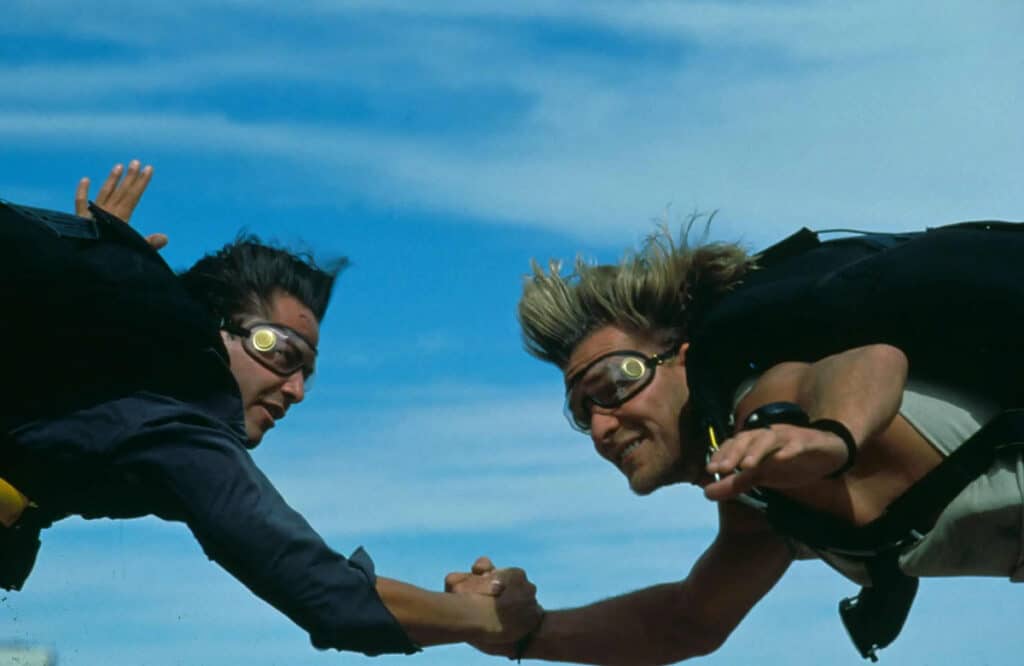
Bigelow, who was influenced by filmmakers like Alfred Hitchcock and Sam Peckinpah, had established herself as a talented director with the stylish vampire horror movie Near Dark, and she was looking for a project to follow her Jamie Lee Curtis cop thriller Blue Steel. She envisioned the story as a “wet Western,” and was drawn to its unorthodox depiction of lawmen and criminals, and how one could be seduced to cross the line.
Cameron would executive produce the movie, and along with Bigelow performed an uncredited rewrite to improve the pacing, turbocharge the action, and strengthen the female protagonist. Bigelow wanted impressive action but also for audiences to be emotionally involved in the characters. The project would be the first for Larry Gordon’s production company Largo Entertainment, and the completed movie would be released by 20th Century Fox, the home of Cameron’s Aliens and The Abyss.
To play the lead role of eager but vulnerable football hero turned FBI agent Johnny Utah, the studio wanted a hot young actor like Val Kilmer, Johnny Depp or Charlie Sheen again. But Bigelow was fixated on Keanu Reeves, and was even so certain of his potential as an action star that she considered quitting the project if he wasn’t cast. The producers were concerned with the choice, and even James Cameron later admitted he wasn’t entirely convinced at the time, but ultimately the director got her way, helping place the actor on a path to A-list action superstardom.
Patrick Swayze, who was already on the A-list after the smash hit Dirty Dancing, said he was originally approached for the Utah role but was only ever interested in playing Bodhi, the spiritual ringleader of the mask-wearing bandits. Swayze was attracted to the dynamic between the protagonist and antagonist, which he described as “a love story between two men.” The movie would actually not be his first time sharing the screen with Keanu Reeves, who had made his feature debut on Swayze’s hockey team in the 1986 sports drama Youngblood.
The original script characterized Johnny’s romantic interest as a stereotypical blonde California beach babe, which was also what the studio wanted. After auditioning dozens of actresses to play brash surfer girl Tyler, Bigelow selected Lori Petty for her athleticism and spunky attitude, as well as her effortless screen chemistry with Reeves.
For Johnny’s irascible older partner Angelo Pappas, the eccentric agent with unconventional theories and a fondness for meatball sandwiches, the role would be played by Gary Busey at perhaps his Gary Busey-est. John C. McGinley was cast as the pair’s scene-stealing by-the-book boss, while Bodhi’s quartet of bank robbers was filled out with James LeGros, and pro-surfers slash actors John Philbin and Bojesse Christopher.
The project was given a $24 million dollar budget and would go before cameras in July of 1990 under the working title Riders on the Storm. But before Bigelow could call “Action!”, she needed her cast fully prepared for all that action. Reeves hit the gym to pack on muscle, learned firearm training with the LAPD, and worked on Johnny’s moves with UCLA football quarterback coaches. Gary Busey described Reeves as “a fresh piece of clay” that Bigelow molded into an action hero. Reeves also spent time with the FBI getting pointers on chasing bank robbers – although the actual FBI agent assigned to the Keanu case would later claim that none of his advice “came within a million miles of the finished film.”
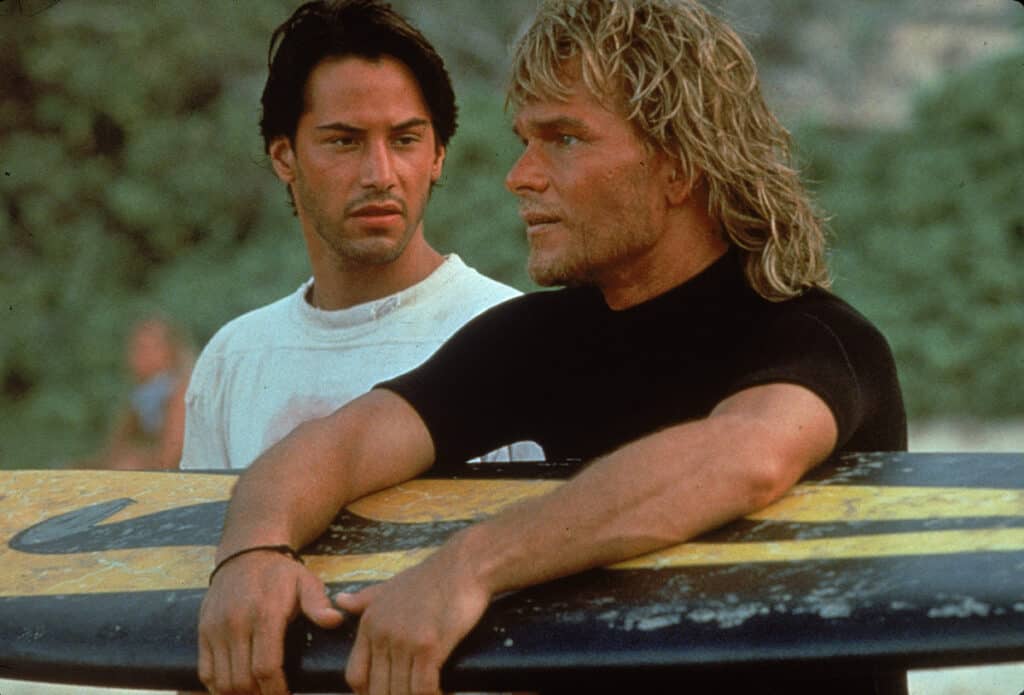
To get ready for the movie’s critical surfing scenes, the three leads trained with self-proclaimed “surf doctor of Hollywood” Dennis Jarvis, who had his work cut out for him. Swayze and Reeves had little or no experience, but Midwesterner Lori Petty had never even been in the ocean in her life. Despite his grace as a dancer, Swayze called the challenge of riding the waves “a humbling experience,” and endured some cracked ribs from the learning process to punctuate his point.
Swayze had no misgivings about dropping out of a plane and, seemingly sharing Bodhi’s mindset, passionately embraced skydiving during production, and he convinced crew and cast members (even Gary Busey) to join him on his many weekend jumps. Of course, ultimately the producers learned of the potentially dangerous extracurricular activities and pulled the ripcord on Swayze’s fun, demanding that he stop skydiving recreationally … but with the concession that he would be able to personally perform a jump on film at the end of production. Some of the final scenes shot for the movie were Bodhi plummeting backwards out of the plane and performing aerial acrobatics in freefall. Swayze was puzzled that he had to battle insurance companies about engaging in the statistically safe sport of skydiving, yet they were apparently cool with the actor “getting my brains pounded in by the biggest surf on the planet,” which he claimed nearly ended his life on several occasions.
As for the rest of the exhilarating skydiving scenes, they were performed by professional stuntmen. The close-ups were achieved by attaching the actors on telescoping arms suspended above large wind machines, which seems uncomfortable but at least much less likely to result in colliding with the ground at terminal velocity.
Bigelow also wanted her actors to perform as much of their own onscreen fights as possible, so stunt coordinator Glenn Wilder held weekend sessions to practice and choreograph the fisticuffs. When Red Hot Chili Peppers frontman Anthony Kiedis didn’t show up, Wilder informed him that unless he participated, he’d be getting knocked the fuck out by the first punch during the scuffle with Bodhi and Johnny, which prompted Kiedis to then faithfully attend all further training sessions.
Keanu Reeves did share one misfortune with his screen alter ego – his own dreams of playing professional hockey were put on the bench due to an injury during his teens. Ironically, while filming the beach football scene, it was Swayze who suffered a knee injury. According to his stunt double, Swayze’s leg swelled up to “triple the size of a normal knee”, but the actor just had the on-set doctor drain the fluid so he could continue shooting. Sounds like Swayze’s even tougher than Dalton.
Swayze did get spared from the movie’s memorable and frantic alley chase, an innovative sequence before the days of drones and GoPros. To capture the chaotic foot race at speed, Bigelow and cinematographer Donald Peterman developed the pogo cam, a gyro-stabilized snorkel lens camera on a long pole to get up close and personal in tight quarters. Reeves performed much of the punishing pursuit himself, but under that Ronald Reagan mask was actually stunt double Scott Wilder, as Swayze was otherwise occupied on a European promotional tour for that summer’s hit movie Ghost.
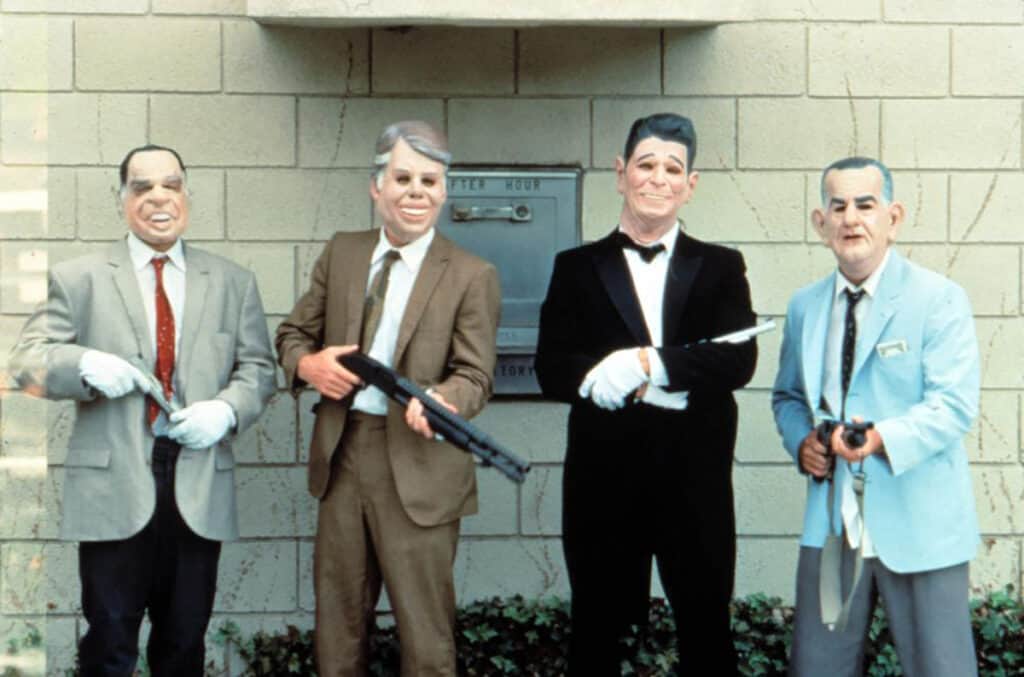
With the logistical and physical challenges of all the movie’s heart-pounding action, it was ironically one of the more mundane moments that would prove particularly frustrating to capture. The opening one-shot Steadicam walk-and-talk with Utah receiving a tongue-lashing from his new supervisor was an endless string of flubbed lines and timing and technical errors. McGinley said the sequence took an entire day and nearly 50 takes to finally get right.
For the finale when Johnny eventually catches up to fugitive Bodhi pondering the monstrous waves of Bell’s Beach, Australia, this was actually a reshoot done in Oregon months after principal photography had wrapped. Reeves had grown out his hair for Bill & Ted’s Bogus Journey and Swayze had chopped his locks for City of God, but the styles conveniently suited the characters as Utah had become a renegade in the agency, and Bodhi would have logically changed his appearance in hiding.
The colossal killer wave itself was captured in Waimea Bay in Hawaii, and pro surfer Darrick Doerner paddled out to perform Bodhi’s final plunge. Doerner said it was the first time anyone had asked him to purposely wipe out, but at least he did end up receiving a Guinness World Record for the biggest wave ever bodysurfed.
By all accounts, everyone involved had a blast making the film, and the cast and crew had nothing but praise for the meticulous and humanizing approach of director Kathryn Bigelow, who Reeves described as “a female Utah” in her motivation and strong will. Swayze noted that having a woman directing an action movie brought an intimacy and a “deeper level of truth” to what otherwise could have been standard macho material.
20th Century Fox released the R-rated movie, now sporting the surf-appropriate title Point Break, on July 12, 1991. The movie opened with $8.5 million to land in fourth place behind Boyz N the Hood, the reissue of Disney’s 101 Dalmatians and, coincidentally, Bigelow’s soon-to-be-ex-husband James Cameron’s blockbuster sequel Terminator 2, which had opened the previous week. Despite getting drowned by critics at the time, Point Break stuck around theaters long enough to collect $43 million domestic and $83 million worldwide.
As we know, from there the movie’s unique blend of drama, absurdity and adrenaline addiction influenced countless action movies that followed, and had an enduring pop culture legacy, getting referenced in everything from Edgar Wright’s Hot Fuzz to Marvel’s The Avengers . Made in the days before digital face replacement and CGI stuntmen, the movie’s many grounded but invigorating sequences have justified Point Break’s inclusion on numerous lists of all-time great action classics.
There have been several attempts at more Point Break. A sequel shortly after the movie’s initial success was considered but swiftly abandoned. Another aborted attempt in 2008 with Speed director Jan de Bont would have featured a new hero chasing a group of ex-Presidents copycats. A 2015 remake with Edgar Ramirez and Luke Bracey was a critical wipeout and failed to thrill audiences. The movie has also been honored by the long-running stage show Point Break Live!, which would cast a random audience member as Utah, with his lines read from cue cards. Original screenwriter Peter Iliff also hasn’t given up, recently coming up with an as-yet-unproduced sequel following Johnny Utah’s daughter, an undercover FBI agent trying to solve the mystery of her missing dad.
Director Kathryn Bigelow continued mixing emotion and impactful action, and although she hit a few bumps in the road after Point Break, she would go on to win Oscars for The Hurt Locker and Zero Dark Thirty. Keanu Reeves, now at the height of his fame, has publicly declared that Point Break changed his life, as further evidenced by a diverse career that has spanned more than three decades since.
Sadly, we lost Patrick Swayze to pancreatic cancer in 2009, but for many fans, Point Break remains not just his most iconic role, but one of the best action movies of all time.






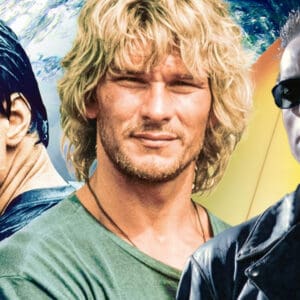
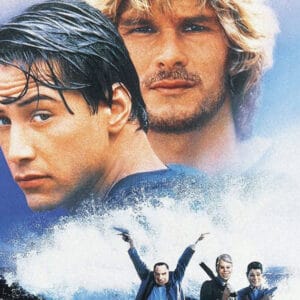
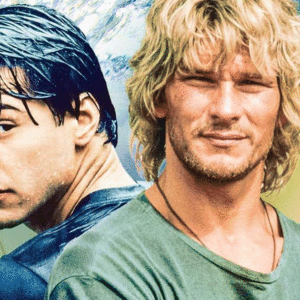
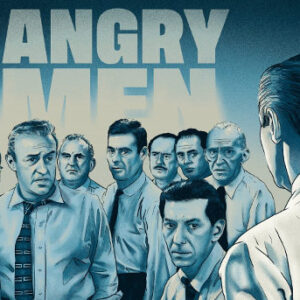










Follow the JOBLO MOVIE NETWORK
Follow us on YOUTUBE
Follow ARROW IN THE HEAD
Follow AITH on YOUTUBE